On Feb. 18th 2021, NASA successfully landed their new rover on Mars. Perseverance Rover was the second of its kind along with the Curiosity Rover which landed on Mars the same way. Before Perseverance, NASA had already landed on Mars the Curiosity rover with a quite amazing Entry, Descent and Landing profile. Perseverance landed on Mars by using the exact same profile.
What was that profile?
Perseverance entered the Martian atmosphere inside its protective aeroshell. The Martian atmosphere started decelerating the spacecraft due to drag but these forces produce heat. The temperature on the heat shield of the spacecraft reached about 2,370 degrees Fahrenheit (about 1,300 degrees Celcius).
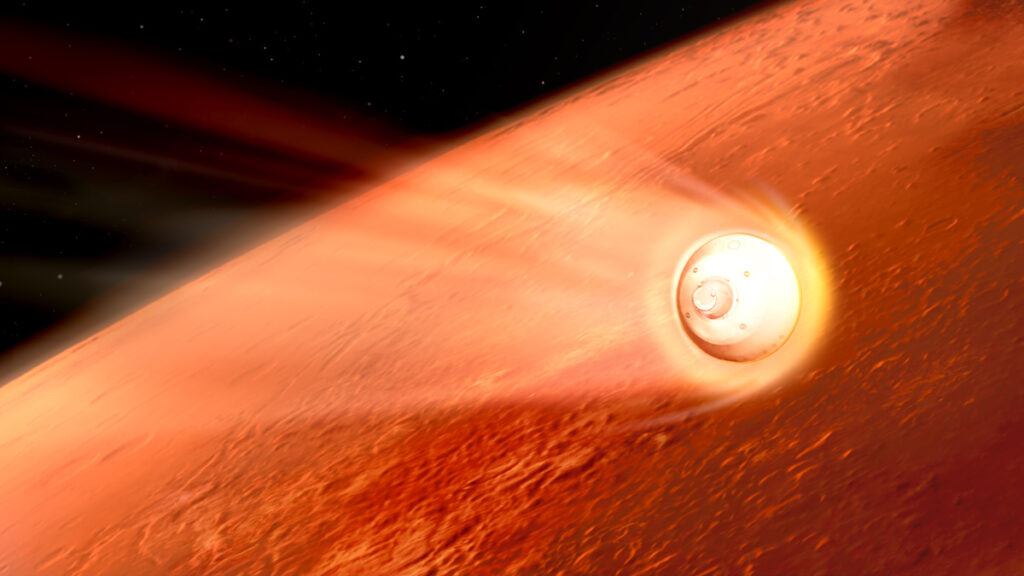
When the drag decelerated the aircraft to bellow 1,000 miles per hour (1,600 kilometers per hour), the supersonic parachute deployed. Some twenty seconds after the parachute deployment, the heat shield of the spacecraft separated from it and dropped away.
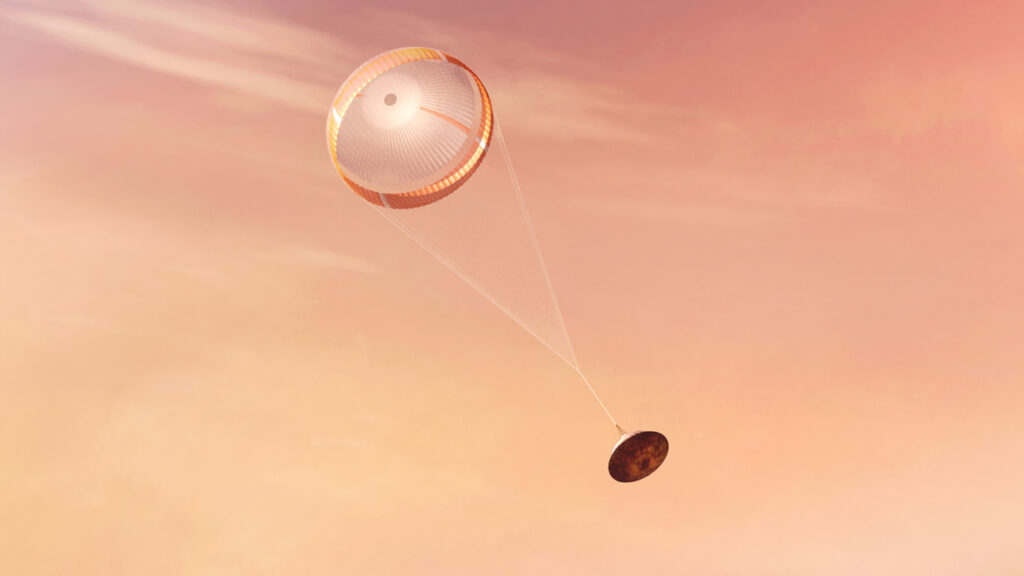
At the time where the vehicle had reached about 200 miles per hour (320 kilometers per hour), Perseverance cut itself free from the parachute and started descending toward the Martian ground by using its rocket-powered descent stage.
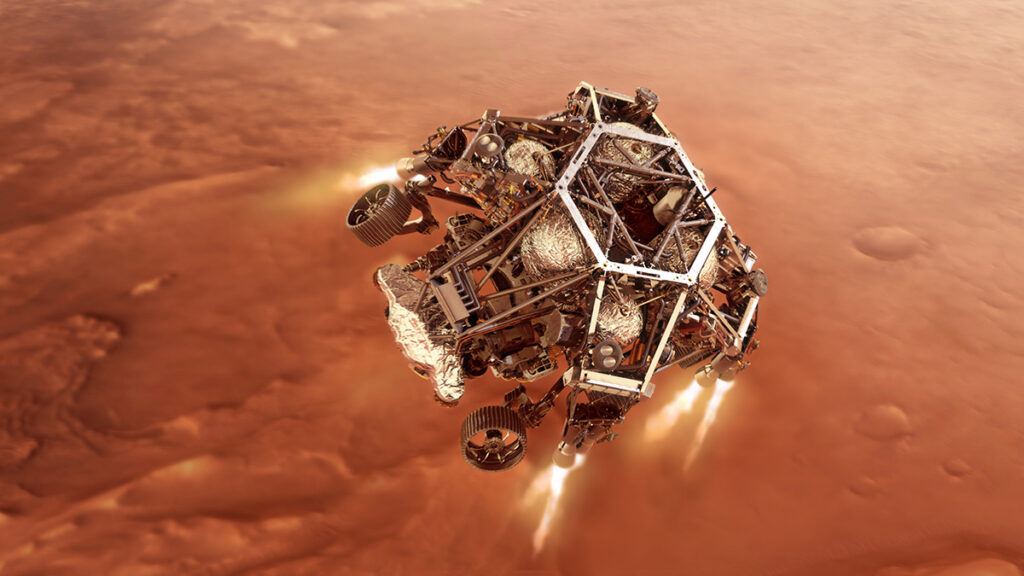
About 12 seconds before touchdown, and at about 66 feet (20 meters) above the ground, the descent stage lowered Perseverance on a set of cables about 21 feet long (6.4 meters). At the time the wheels of the rover touched down, the descent stage cut the cables and flown away from the rover to let it start its mission.
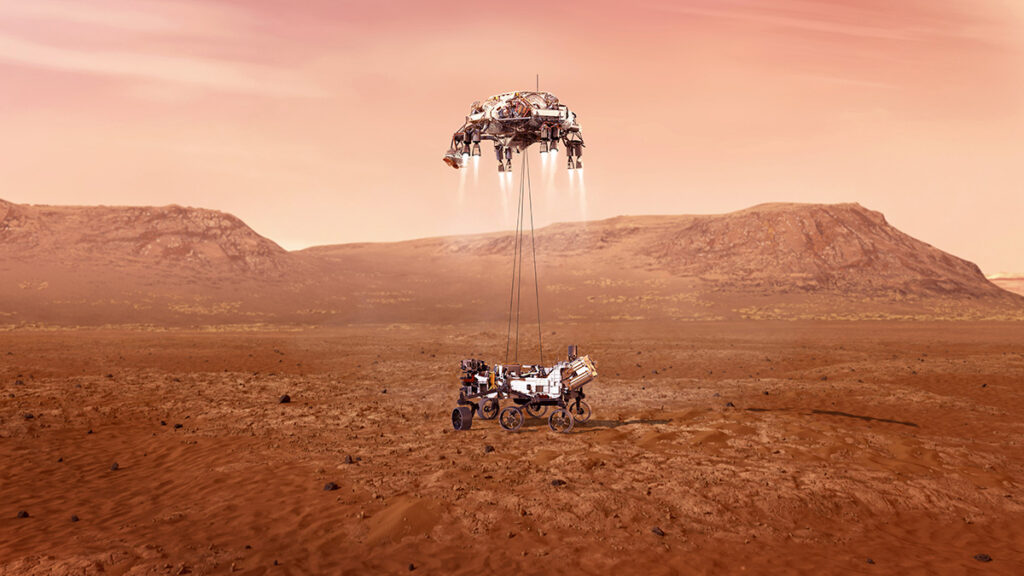
But now what? Did we sent the rover to Mars and the mission is over? No, it is actually the opposite. The mission of the rover has just started.
Perseverance rover mission is to conduct scientific studies on Mars. The primary mission span of it is at least one Martian year which is 687 Earth days. Hopefully, if everything goes well with the rover, the rover will continue operating beyond its mission span. As an example, its older brother, Curiosity is still operating on Mars for more than 8 years.
Controlling the new toy
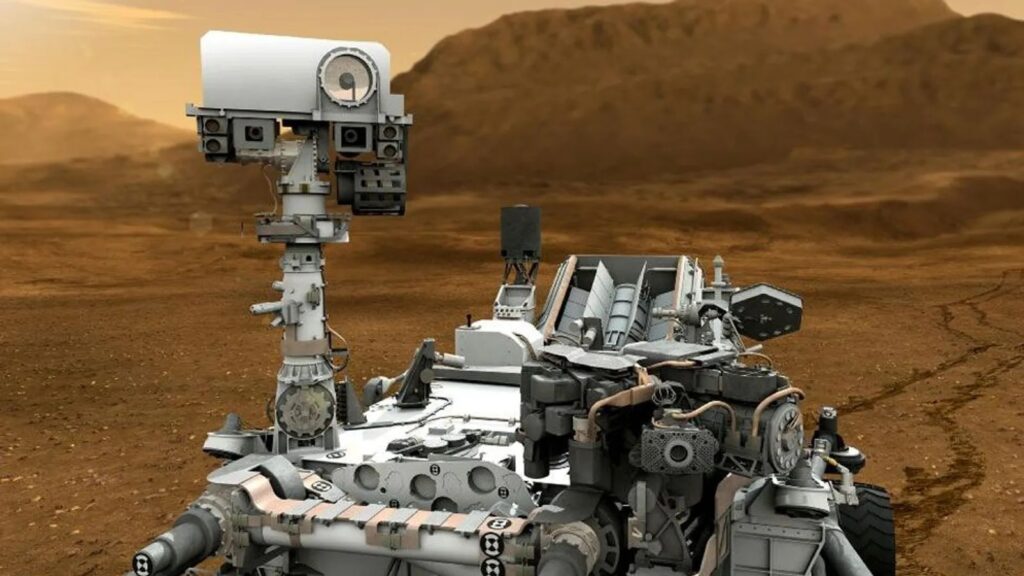
But how do you control such a rover? There is a common misconception that the rover is being driven by using a joystick. Unfortunately, driving the rover is an extremely difficult task and requires a lot of smart engineers to complete that task. The signal from Earth takes around 15 minutes to arrive to Mars and as such driving the rover with a joystick is totally impossible.
At the time the rover lands on Red planet, the crew enters the Martian time. Mars day is 40 minutes longer that the Earth day and as such engineers that handle the operation of the rover start living on the Martian time. That mean that every day they go 40 minutes later to work.
The process of controlling the rover has been done successfully by NASA in other rovers too. In case of its older brother Curiosity, scientists and engineers do quite a elaborate process.
Briefly, during the Martian night, scientists prepare the sequences the rover has to do. Then they uplink those commands to the rover through the communication satellites – MRO (mars Reconnaissance Orbiter and Odyssey. When the rover wakes up and receives these commands it then carries out the tasks.
Operation
While the rover is asleep (during the night), scientists analyze images and data that came back from Mars. Then they discuss what to do next and also have a series of meetings in order to take the correct decisions of the rovers next moves.
Once the decisions have been taken, the drivers of the rover start working. By using 3D images from the navigation cameras of the rover, the drivers try to find out the best and easiest route to the destination that does not have any obstructions and will not jeopardize the integrity of the rover.
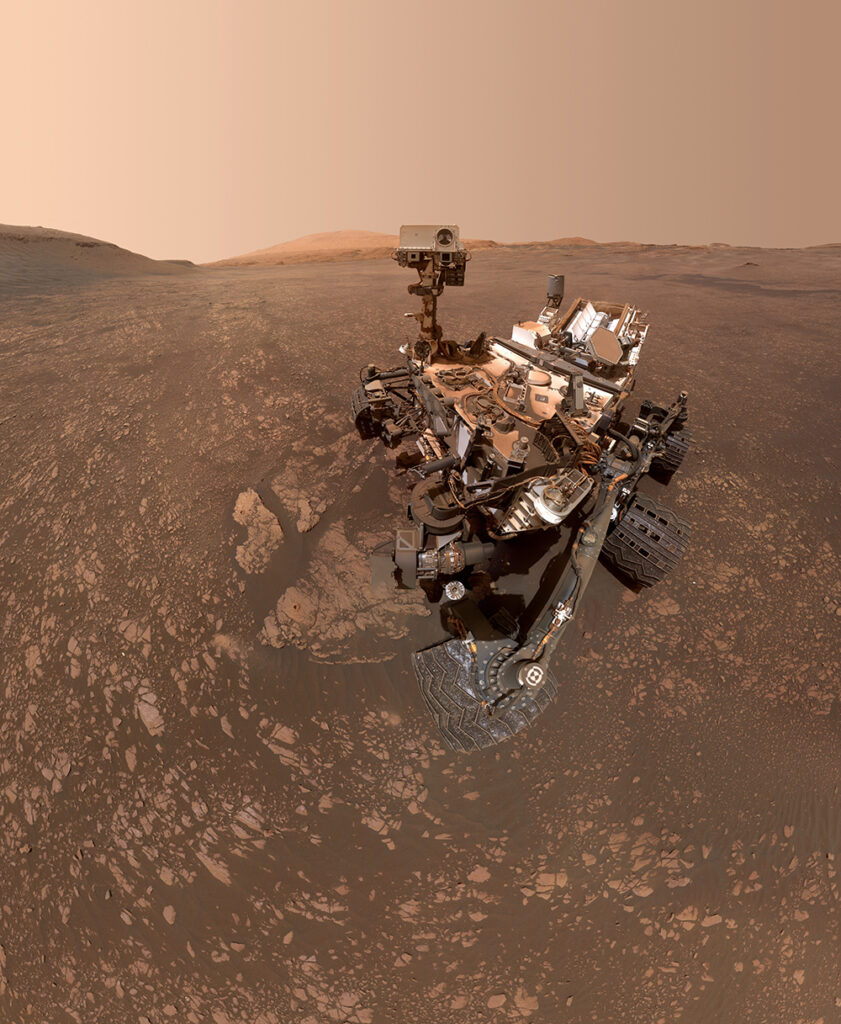
Then, they code all the appropriate instructions the rover has to follow. The instructions might involve the operation of an instrument (eg. taking a picture , collect a rock sample, etc.) or the movement of the rover.
Before sending the instructions to the rover is to simulate the whole process. If the simulation fails, the drivers will have to find out what happened and a solution to the problem. If the simulation completes successfully without any hiccup, then they proceed to the final step.
When either of the satellites (Odyssey or MRO) are in the right place and provided that the new day on Mars has dawned, they instruct the rover to wake up and then upload the commands to the rover. Once the rover starts moving then it runs autonomously.
The rover has its own mind. It is using it in order to avoid the bad situations it would end up. It can look at its cameras and ensure that it is taking a safe path to the destination. If for some reason it senses that the terrain is not safe to move (eg. it could get grounded on a rock or fall over a cliff) then the built-in safety mechanism kicks in and stops it from doing anything that could be harmful. Next Martian night, the engineers can get all the data, process them and find solutions for the problem. The process repeats endlessly.





Comments
Loading…